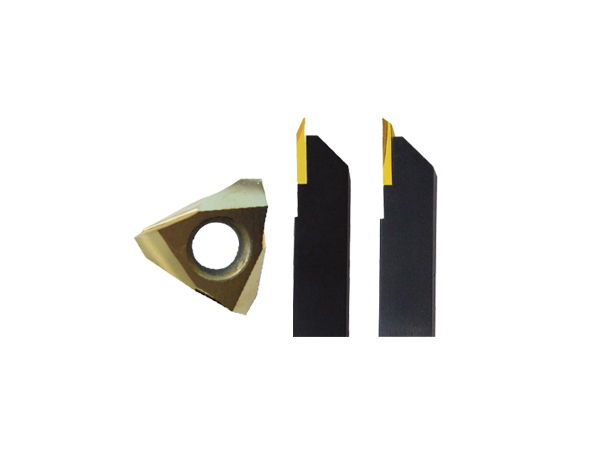Focus on tool design and R & D
Precision cutting tools from Germanymanufacturer
+86 133-9231-4699
Focus on tool design and R & D
+86 133-9231-4699

1. Factors affecting the selection of CNC tools
When choosing the type and specification of the tool, the following factors should be considered:
(1) Nature of production
The nature of production here refers to the batch size of the parts, mainly considering the impact on tool selection from the processing cost.
For example, it may be cost-effective to use special tools in mass production, while in single or small batch production, it is more suitable to choose standard tools.
(2) Machine type
The influence of the CNC machine tool used to complete the process on the selected tool type (drill, turning tool or milling tool). Under the condition that the rigidity of the workpiece system and the tool system can be guaranteed, high-productivity tools, such as high-speed cutting tools and large-feed tools, are allowed.
(3) CNC machining plan
Different CNC machining programs can use different types of tools. For example, drilling and reaming can be used for hole processing, or drilling and boring tools can be used for processing.
(4) The size and shape of the workpiece
The size and shape of the workpiece also affect the selection of tool types and specifications. For example, special tools must be used to process special-shaped surfaces.
(5) Machining surface roughness
The surface roughness of the machined surface affects the structure shape and cutting amount of the tool. For example, rough milling cutters can be used for rough milling of blanks, and fine-tooth milling cutters are best used for finishing milling.
(6) Machining accuracy
The machining accuracy affects the type and structure of the finishing tool. For example, the final machining of the hole can be processed with a drill, a reaming drill, a reamer or a boring tool according to the accuracy of the hole.
(7) Workpiece material
The workpiece material will determine the choice of tool material and geometric parameters of the cutting part. The tool material is related to the machining accuracy and material hardness of the workpiece.
2. Performance requirements of CNC tools
Because CNC machine tools have the characteristics of high processing accuracy, high processing efficiency, concentrated processing procedures and few parts clamping times, higher requirements are put forward on the CNC tools used. In terms of tool performance, CNC tools should be higher than those used by ordinary machine tools.
When choosing a CNC tool, the standard tool should be selected first, and a variety of high-efficiency composite tools and special special tools can be selected when necessary. When choosing standard CNC tools, you should choose various advanced tools as much as possible based on the actual situation, such as indexable tools, solid carbide tools, ceramic tools, etc.
When choosing CNC machine tool processing tools, the following issues should also be considered:
(1) The type, specification and accuracy grade of the CNC tool should be able to meet the processing requirements, and the tool material should be compatible with the workpiece material.
(2) Good cutting performance. In order to adapt to the tool's ability to use a large backfeed and high feed rate when roughing or processing difficult-to-machine materials, the tool should have the ability to withstand high-speed cutting and powerful cutting. At the same time, the same batch of tools must be stable in terms of cutting performance and tool life, in order to realize tool change according to tool life or the CNC system to manage the tool life.
(3) High precision. In order to meet the requirements of high precision and automatic tool change of CNC machining, the cutting tools must have high accuracy. For example, the radial dimension accuracy of some integral end mills is as high as 0.005mm.
(4) High reliability. To ensure that there will be no accidental damage and potential defects of the tool in the CNC machining, which will affect the smooth progress of the machining, the tool and the accessories combined with it must have good reliability and strong adaptability.
(5) High durability. CNC machining tools, whether in roughing or finishing, should have higher durability than those used in ordinary machine tools, so as to minimize the number of times of changing or grinding tools and tool setting, thereby improving the processing efficiency of CNC machine tools And to ensure the quality of processing.
(6) Good chip breaking and chip removal performance. In CNC machining, chip breaking and chip removal are not handled manually like ordinary machine tools. Chips are easy to wrap around the tool and workpiece, which will damage the tool and scratch the processed surface of the workpiece, and even cause injury and equipment accidents. Affect the processing quality and the safe operation of the machine tool, so the tool is required to have better chip breaking and chip removal performance.

3. How to choose a tool
The choice of tool is one of the important contents in the CNC machining process, which not only affects the machining efficiency of the machine tool, but also directly affects the machining quality of the parts. Because the spindle speed and range of CNC machine tools are much higher than that of ordinary machine tools, and the output power of the spindle is larger, compared with traditional machining methods, higher requirements are put forward for CNC machining tools, including high precision, high strength, and rigidity. Good, high durability, and requires stable dimensions, easy installation and adjustment. This requires reasonable tool structure, standardization and serialization of geometric parameters. CNC tools are one of the prerequisites for improving machining efficiency. Its selection depends on the geometry of the processed parts, material conditions, fixtures and the rigidity of the selected tools of the machine tool. The following should be considered:
(1) Choose the tool according to the cutting performance of the part material. Such as turning or milling high-strength steel, titanium alloy, stainless steel parts, it is recommended to choose indexable carbide tools with good wear resistance.
(2) Select the tool according to the processing stage of the part. That is to say, the rough machining stage is mainly to remove the margin, and the tool with better rigidity and lower precision should be selected. The semi-finishing and finishing stages are mainly to ensure the machining accuracy and product quality of the parts, and the high durability and high precision should be selected. For high cutting tools, the precision of the cutting tool used in the roughing stage is the lowest, and the cutting tool used in the finishing stage has the highest precision. If you choose the same tool for roughing and finishing, it is recommended to choose the tool eliminated by finishing during roughing, because most of the tool wear eliminated by finishing is slight wear of the blade, and the coating is worn and polished. Continued use will affect the finishing Machining quality, but the influence on rough machining is small.
(3) Select the tool and geometric parameters according to the characteristics of the processing area. When the part structure allows, the tool with large diameter and small ratio of length to diameter should be selected; the end edge of the over-center milling cutter for cutting thin-walled and ultra-thin-walled parts should have sufficient centripetal angle to reduce the cutting of the tool and the cutting part force. When processing softer material parts such as aluminum and copper, you should choose an end mill with a slightly larger rake angle, and the number of teeth should not exceed 4 teeth.
When selecting a tool, the size of the tool must be adapted to the surface size of the workpiece to be processed. In production, end mills are often used to process the peripheral contours of plane parts; when milling planes, carbide blade milling cutters should be selected; when processing bosses and grooves, high-speed steel end mills should be selected; rough surface or rough machining When drilling holes, you can choose corn milling cutters with carbide inserts; for the processing of some three-dimensional profiles and variable bevel contours, ball-end milling cutters, ring milling cutters, tapered milling cutters and disc milling cutters are often used.
During free-form surface machining, since the end cutting speed of the ball-end tool is zero, in order to ensure the machining accuracy, the cutting line spacing is generally small, so the ball-end milling cutter is suitable for surface finishing. The end milling cutter is far superior to the ball end milling cutter in terms of surface processing quality and processing efficiency. Therefore, under the premise of ensuring that the parts are not cut, the end mill should be selected as far as possible when roughing and semi-finishing the surface. Milling cutter. In addition, the durability and accuracy of the tool have a great relationship with the price of the tool. It must be noted that in most cases, the selected tool increases the tool cost, but the resulting increase in processing quality and processing efficiency , You can greatly reduce the overall processing cost.
On the machining center, all the tools are pre-installed in the tool magazine, and the corresponding tool change actions are performed through the tool selection and tool change instructions of the CNC program. Corresponding standard tool holders suitable for the specifications of the machine tool tool system must be selected so that the CNC machining tools can be quickly and accurately installed on the machine tool spindle or returned to the tool magazine. The programmer should be able to understand the structural dimensions, adjustment methods, and adjustment ranges of the tool holders used in the machine tool to ensure that the radial and axial dimensions of the tools are determined during programming, and the order of the tools is arranged in a reasonable manner.
This article comes from: Dongguan Guorui Cutting Tools Co., Ltd.www.mjocut.com
Mobile QR code

Official account

Applet



